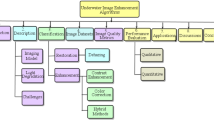Abstract
In this paper, we consider a underwater wireless sensor network, which is composed of an autonomous underwater vehicle (AUV) and the underwater data collection stations. Constrained by limited resources, at each decision epoch the AUV selects one underwater data collection station to update the data and then uploads it to the surface base station. Different from other underwater communication models, we consider the influence of underwater environment on the AUV and develop an AUV model with random lifetime, meanwhile, we further propose that the information arrives randomly with different importance levels. The system model is formulated into a discounted Markov decision process with infinite horizon. Taking the age of information and the importance of information as the performance metrics, the optimal scheduling strategy of the AUV is developed, and the threshold structure characteristics of the optimal strategy are proved. Finally, the numerical examples are given to illustrate the theoretical results, and the impacts of system parameters on the optimal strategy and the value function are also investigated.









Similar content being viewed by others
References
Ludvigsen, M., & Sorensen, A. J. (2016). Towards integrated autonomous underwater operations for ocean mapping and monitoring. Annual Reviews in Control, 42, 145–157.
Liu, G., & Kang, W. (2014). Information acquisition technology of underwater sparse sensor network based on compressed sensing. Chinese Journal of Scientific Instrument, 35(2), 253–260.
Hua, G. (2020). An improved aggregate signature scheme for underwater wireless sensor networks. Journal of Underwater Unmanned Systems, 28(4), 428–433 (in Chinese).
Xiong, K., Huimin, H., Bo Ai, Yu., & Zhang, L. P. (2020). Wireless network design with priority of information freshness in 6G era. Journal of Internet of Things, 4(1), 80–91 (in Chinese).
Hsu, Y. P., Modiano, E., & Duan, L. (2017) Design and analysis of optimal scheduling algorithms. In IEEE International Symposium on Information Theory (ISIT).
Fang, Z., Wang, J., Jiang, C., Zhang, Q., & Ren, Y. (2021). AoI inspired collaborative information collection for AUV assisted internet of underwater things. IEEE Internet of Things Journal, 8, 14559–14571.
Golab, L., Johnson, T., & Shkapenyuk, V. (2012). Scalable scheduling of updates in streaming data warehouses. IEEE Transactions on Knowledge and Data Engineering, 24(6), 1092–1105.
He, Q., Yuan, D., & Ephremides A. (2016). Optimizing freshness of information: On minimum age link scheduling in wireless systems. In 2016 14th International Symposium on Modeling and Optimization in Mobile, Ad Hoc, and Wireless Networks.
Zhao, Y., Yang, T., & Paul, H. (2020). A status updating policy based on age of information in wireless sensor network. Microelectronics and Computer, 37(11), 29–34 (in Chinese).
Khan, M. T. R., Jembre, Y. Z., Ahmed, S. H., Seo, J., Kim, D. (2019). Data freshness based AUV path planning for UWSN in the internet of underwater things. In 2019 IEEE Global Communications Conference (GLOBECOM).
Samir, M., Assi, C., Sharafeddine, S., & Ghrayeb, A. (2020). Online altitude control and scheduling policy for minimizing AoI in UAV-assisted IoT wireless networks. IEEE Transactions on Mobile Computing, 21, 2493–2505.
Wei, J., & Ye, D. (2021). On two sensors scheduling for remote state estimation with a shared memory channel in a cyber-physical system environment. IEEE Transactions on Cybernetics, 1-11. https://doi.org/10.1109/TCYB.2021.3112677
Zhou, B., & Saad, W. (2020). On the age of information in Internet of Things systems with correlated devices. In GLOBECOM 2020—2020 IEEE Global Communications Conference, pp. 1–6.
Alper, B., Muharrem, T., & Burcu, Y. (2019). P-AUV: Position aware routing and medium access for ad hoc AUV networks. Journal of Network and Computer Applications, 125, 146–154.
Han, G., Long, X., Zhu, C., Guizani, M., & Zhang, W. (2020). A high-availability data collection scheme based on multi-AUVs for underwater sensor networks. IEEE Transactions on Mobile Computing, 19(5), 1010–1022.
Wang, L., & Yu, L. (2012). Research on the selection and comprehensive application of utility function synthesis method in journal evaluation. Journal of Information, 70(11), 77–82.
Su, X., & Lu, X. (2017). Ammunition selection model of companion support artillery based on utility function. Firepower and Command and Control, 42(6), 74–79 (in Chinese).
Puterman, M. L. (2005). Markov decision processes: Discrete stochastic dynamic programming. Wiley.
Ross, S. M. (2014). Introduction to stochastic dynamic programming. Academic.
Acknowledgements
The work described in this paper was supported in part by National Natural Science Foundation of China (No. 61761008), Natural Science Foundation of Guangxi (No. 2018GXNSFAA281238), and Innovation Project of Guangxi Graduate Education (No. YJSCXP202105).
Author information
Authors and Affiliations
Corresponding author
Additional information
Publisher's Note
Springer Nature remains neutral with regard to jurisdictional claims in published maps and institutional affiliations.
Rights and permissions
Springer Nature or its licensor holds exclusive rights to this article under a publishing agreement with the author(s) or other rightsholder(s); author self-archiving of the accepted manuscript version of this article is solely governed by the terms of such publishing agreement and applicable law.
About this article
Cite this article
Wu, T., Wen, P. & Tang, S. Optimal scheduling strategy of AUV based on importance and age of information. Wireless Netw 29, 87–95 (2023). https://doi.org/10.1007/s11276-022-03101-x
Accepted:
Published:
Issue Date:
DOI: https://doi.org/10.1007/s11276-022-03101-x




